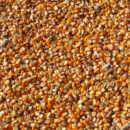FNC News
Landowner News - Crop Risk Management Decisions for 2024
Just like tax-filing season, you can count on spring crop insurance sales closing -- and both come up quicker than expected every year. While there are many options when it comes to insuring your intended crops, it's important to use a plan that best matches your risk tolerance level. There are plans that focus on yield coverage only or a combination of yield and revenue, as well as county-based coverage that is specific to an individual’s farm and coverage. Much of the country has a sales closing deadline of March 15, so it’s important to start thinking about what is best for your farming operation and your risk management strategy.
With this year’s commodity prices trending lower than the last couple of years, federal crop premiums should be a bit lower (albeit so will coverage amounts). Another key component to determining premiums is the implied volatility factor, which measures market expectations of the likelihood of large price swings from the base/projected prices. The higher the factor the more of an impact of higher premiums. The factors are crop specific and are currently trending comparable to last year’s factors and less than 2021 and 2022.
In addition to the standard crop plans of insurance, there are other products available should you wish to have more coverage or coverage for specific situations. There are federally subsidized programs that will build upon your underlying crop coverage but pay at the county level, meaning the entire county would have to have a loss before any claim payments would be triggered. These products are the Supplemental Crop Option (SCO), which increases coverage to 86%, and the Enhanced Coverage Option (ECO), which adds coverage from 86% to a choice of either 90% or 95%. Federally subsidized programs have premium rates and rules set by the government, and there is no price competition between agencies and insurance companies.
Crop insurance companies also offer their own individual products that can provide an increase to established projected prices. Another consideration is coverage specific to hail damage and the choice to add wind coverage to some crops, such as corn and seed corn. Many companies will include additional coverage such as fire and lightning, vandalism, and transit coverage to first place of storage and harvested stored grain.
Along with the upcoming sales closing deadline of March 15, it is also the deadline for enrolling in either ARC (Agriculture Risk Coverage) or PLC (Price Loss Coverage) at the county FSA offices. Enrollment is by crop and by FSA farm number. It is an annual sign-up, so if nothing is changed or updated at FSA, your program choice from last year will roll to this year. If considering SCO as part of your risk management plan, keep in mind that ARC is not allowed, and you are limited to the PLC program on that crop.
There are a variety of choices available for protecting your crops, and insurance coverage can be one of the risk management tools used. It’s important to meet with an insurance agent prior to the sales closing deadline to lock in your coverage for the season. If you have questions or want to discuss, contact the experts at Farmers National Company through our website at www.fncinsurance.com.
More News




